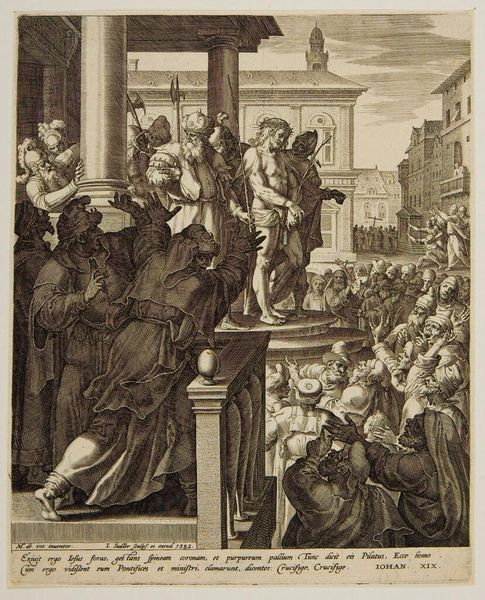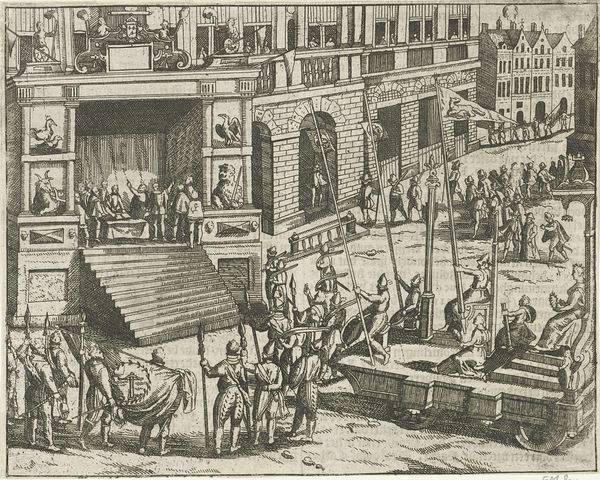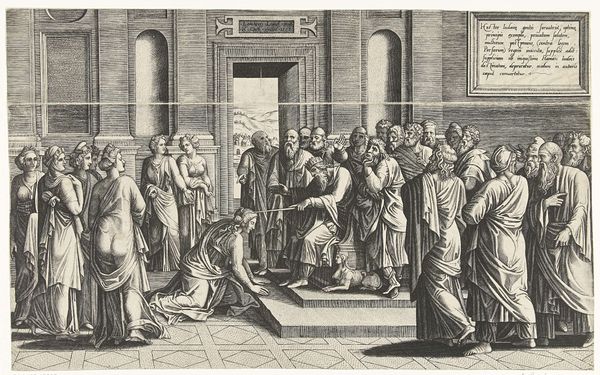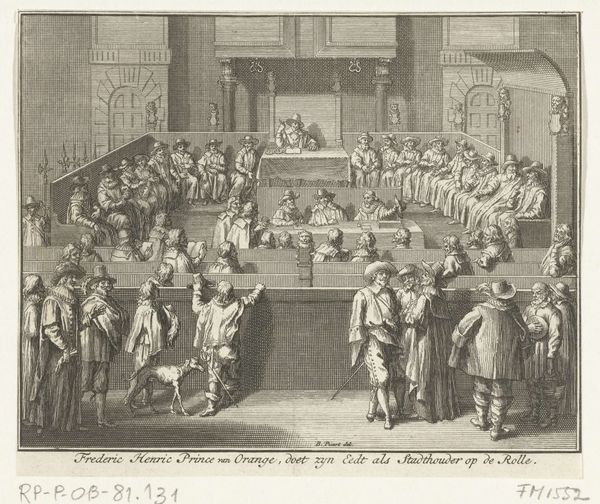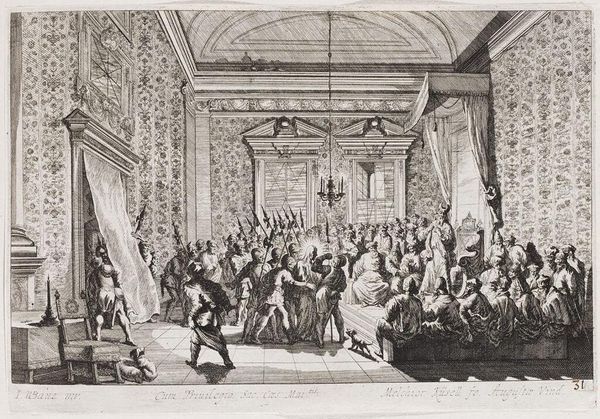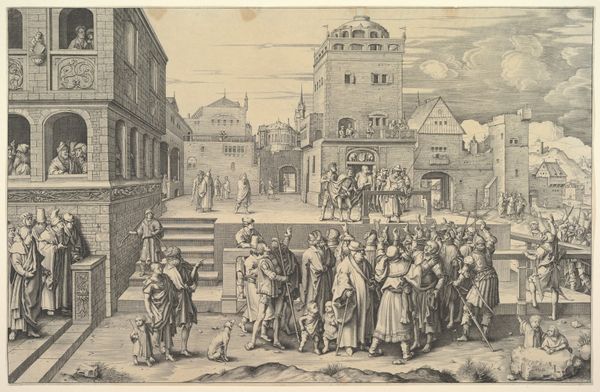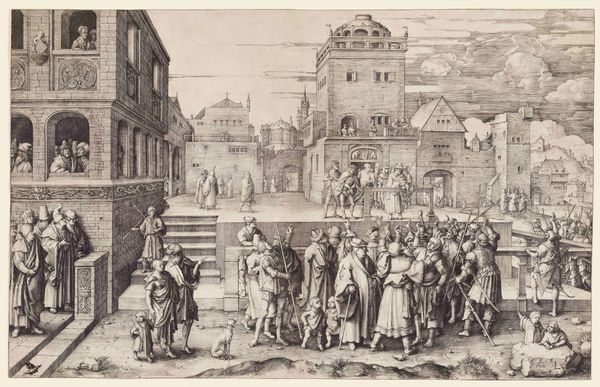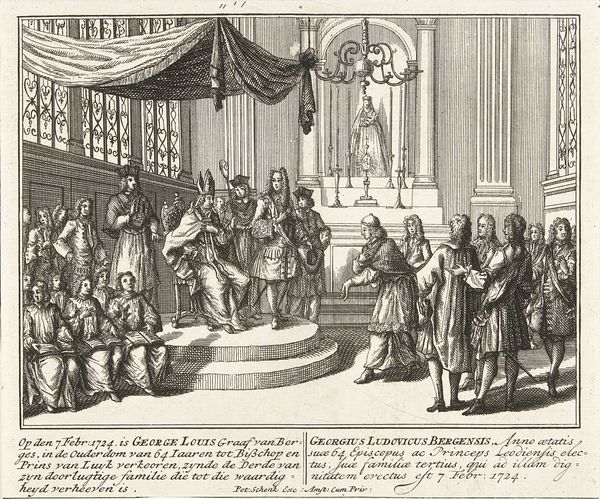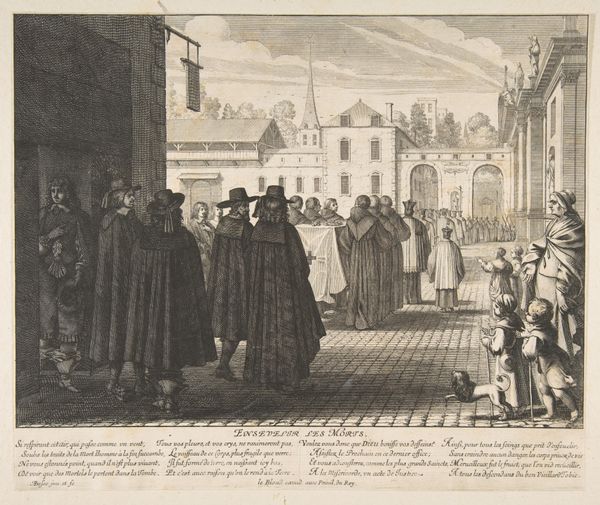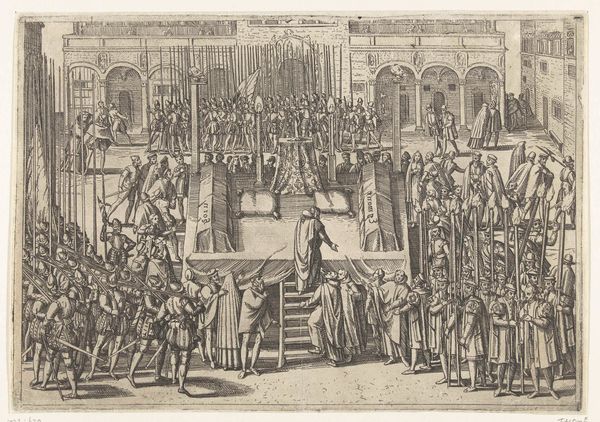
The Arrival of the English Ambassadors 1498
0:00
0:00
vittorecarpaccio
Galleria dell'Accademia, Venice, Italy
painting, oil-paint, textile
#
portrait
#
venetian-painting
#
narrative-art
#
painting
#
oil-paint
#
sculpture
#
textile
#
oil painting
#
group-portraits
#
christianity
#
men
#
genre-painting
#
history-painting
#
italian-renaissance
Dimensions: 275 x 589 cm
Copyright: Public domain
Curator: What strikes me first about this artwork is the palpable sense of quiet dignity. Editor: Indeed. The Galleria dell'Accademia in Venice houses this narrative painting from 1498 by Vittore Carpaccio titled "The Arrival of the English Ambassadors." Its intricate details create a world that feels simultaneously grounded and subtly dreamlike. What do you make of it? Curator: Well, Carpaccio, as you know, excels at capturing not just a moment, but the feeling of a moment rippling outwards. I am most captivated by the painting’s arrangement. It calls forth the interplay of foreground and background, using architecture to frame the human figures. Editor: The visual staging is certainly purposeful. Considering the historical context, the arrival of foreign ambassadors would have been a significant event in Venice. So how do you think the artist uses imagery to communicate social or political hierarchies here? Curator: The symbols speak to layered negotiations of power. Note the detailed rendering of the ambassador’s attire, juxtaposed against the religious iconography visible through architectural frames; notice the details of the basilica and harbor contrasted by the men inside speaking to status. All this communicates Venetian aspiration in bridging sacred order and commercial prowess. Editor: I see what you mean. And the fact that this scene is part of a series commissioned for the Scuola di San Giorgio degli Schiavoni complicates its apparent straightforwardness. We have to think about the intended audience and how Carpaccio's visuals speak to Venetian identity as much as English diplomacy. How do these detailed depictions affect our perception of history and intercultural relations? Is it celebration, caution, or something more complex? Curator: Perhaps it reflects a nuanced dance between these things. After all, visual traditions carry embedded messages that extend beyond a simple transcription of events, right? Even if "history" is always someone’s story and thus partial. The architecture with its classical references reinforces the ideal of enlightened governance and divine sanction. Editor: Which reinforces Venice’s own self-image, even while depicting outsiders. It really does ask who is telling the story. I find myself questioning if its legacy of mercantile exchange and political maneuvering remains in our own cultural landscape today. Curator: Yes, and ultimately invites us to critically examine whose stories get told, how power shapes memory, and what endures in these potent, painted dialogues across centuries. Editor: So true! Carpaccio gives so much to consider, and to see!
Comments
No comments
Be the first to comment and join the conversation on the ultimate creative platform.
